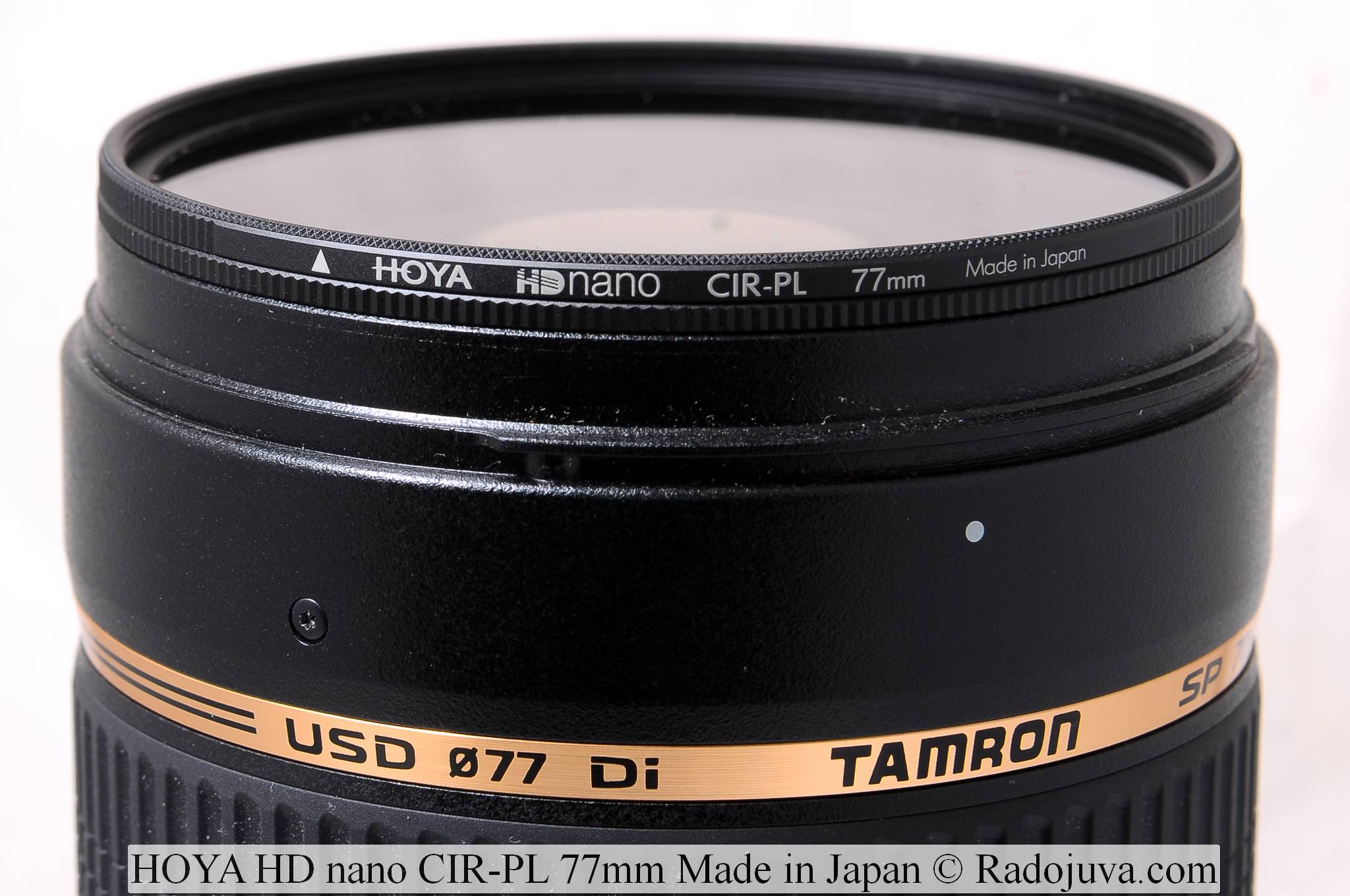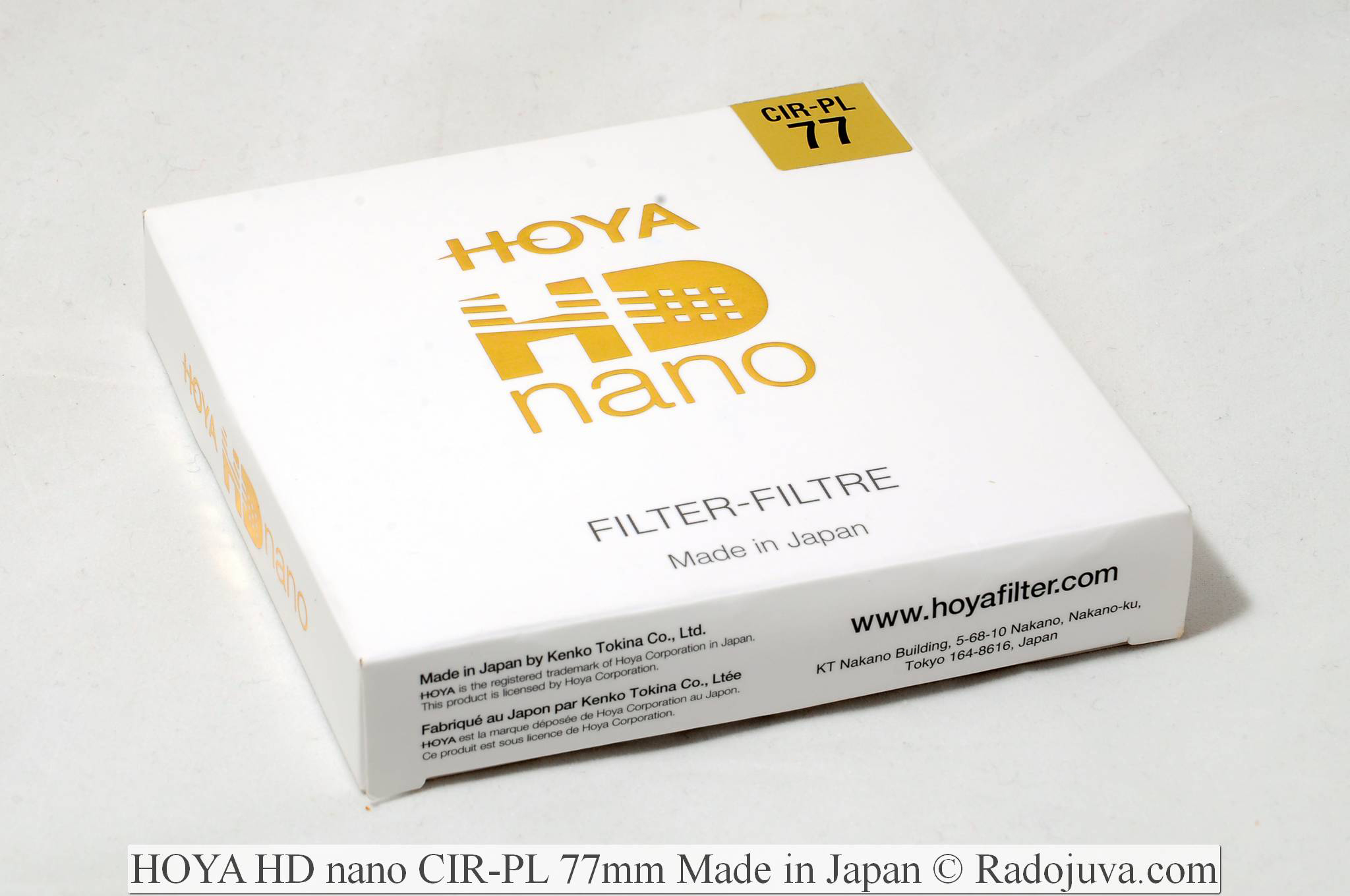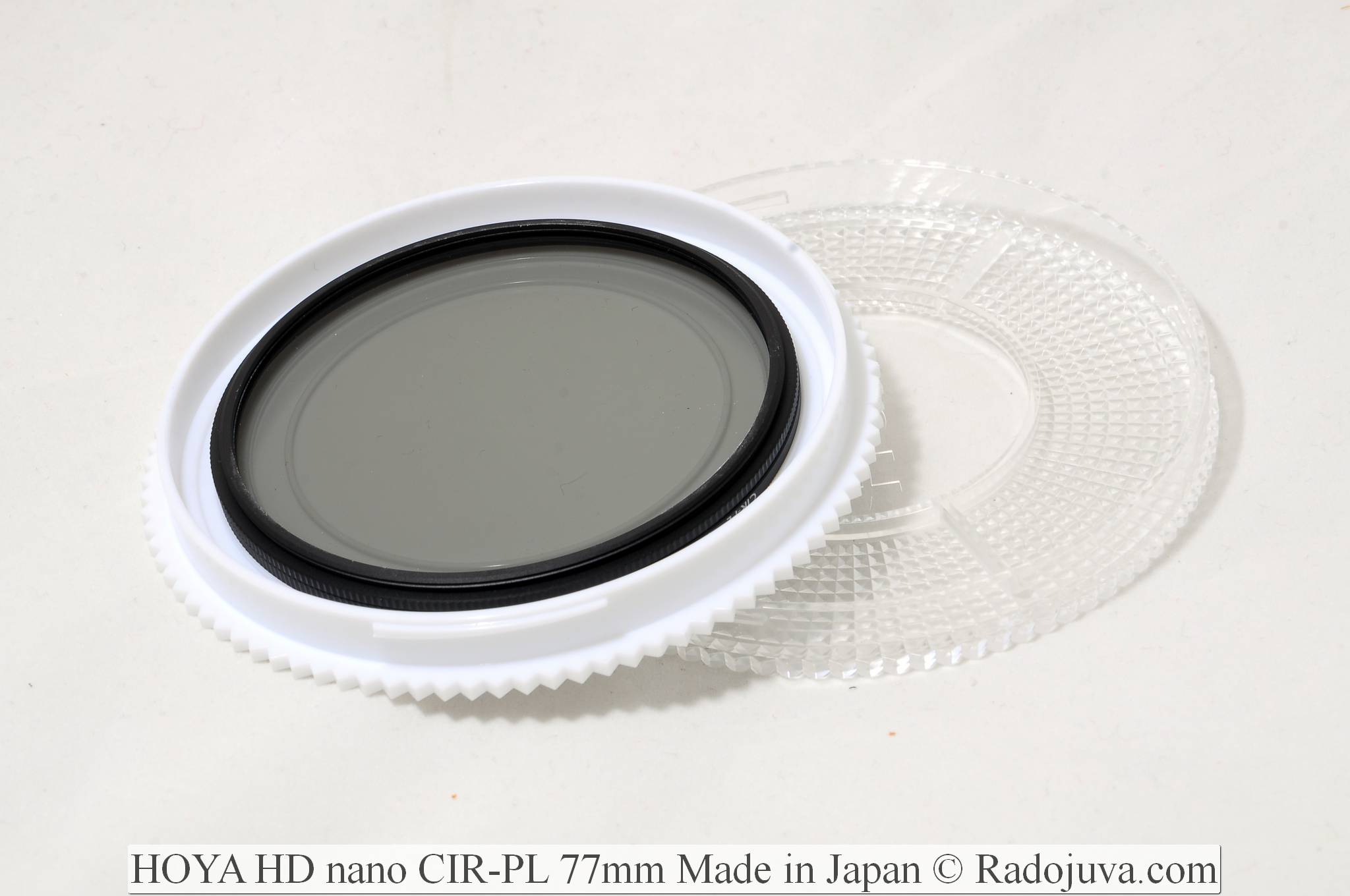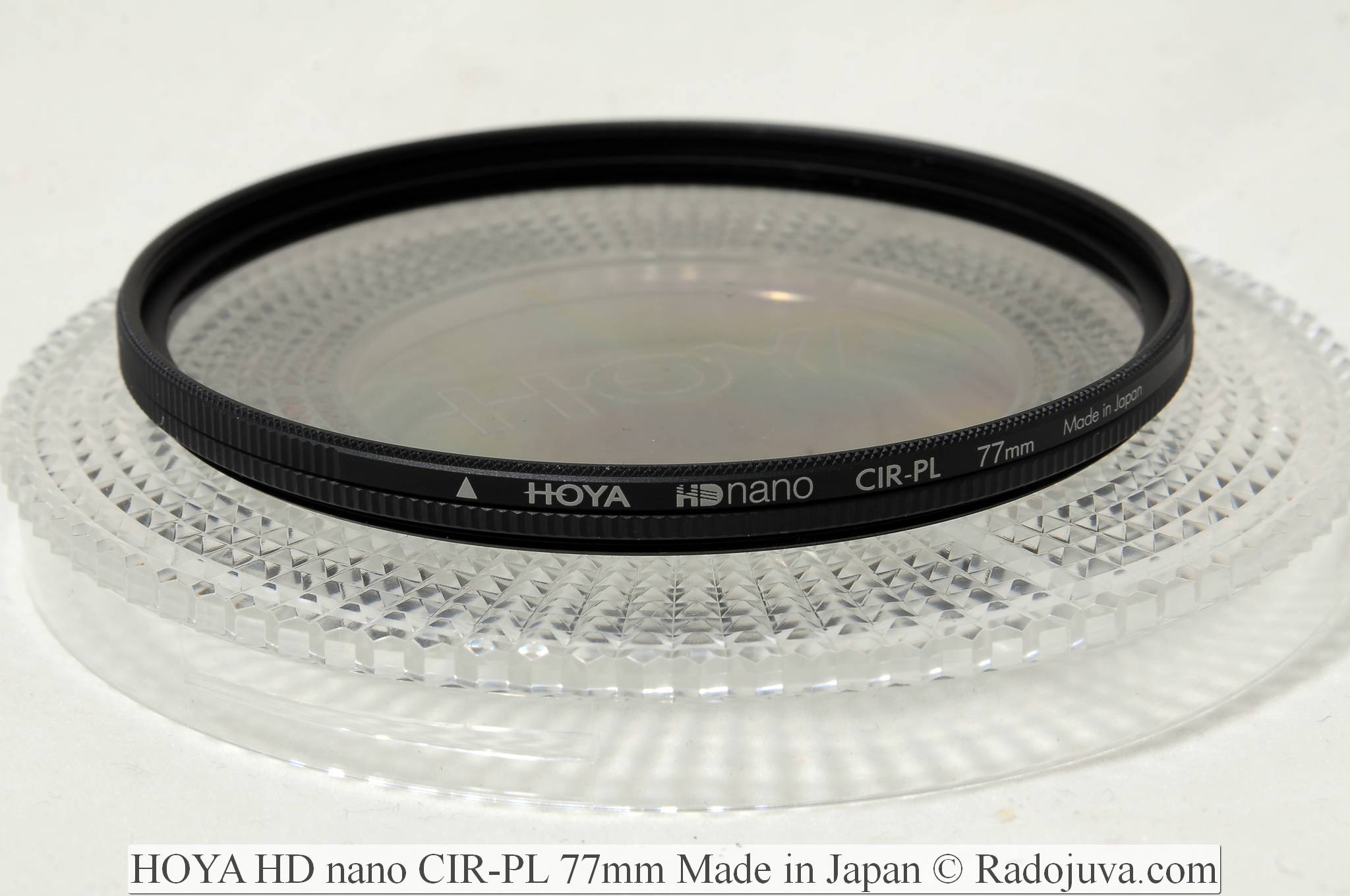Many thanks to the store for the provided Hoya Nano 77mm filter Bomber, where can I find photo bags, photo backpacks, the lenses, Including light filters other manufacturers.
HOYA HD nano CIR-PL 77mm Made in Japan is a light filter from the new TOP line of HOYA filters, which was presented at Photokina 2016. At the time of this review, these filters were not yet on sale and I was just lucky to be one of the first to feel this wonderful photo accessory ... Ruler Hdnano - the last word in filter construction from Kenko Tokina.
In short, the HOYA HD nano CIR-PL is one of the best professional polarizers in the world.
Basic properties
The main feature of the new line is ultra durable nano enlightenment (Ultra-Hard nano Coating), which is practically indestructible and is approximately as strong as the glass itself.
Other properties:
- New 16-layer ultra-uniform, ultra-durable nano-coating (HD line uses 8-layer coating)
- Dirt-resistant, water- and oil-repellent coating is used.
- The filter provides a picture without color shift, contrast and clarity
- The filter absorbs UV light, achieving high transparency and high durability of the UV absorbing film
- The polarizing film is the same as in the latest models of LCD TVs
- Used thermally and chemically tempered glass
- Very thin frame

HOYA HD nano CIR-PL 77mm Made in Japan on the lens Tamron USD DI SP 70-200mm F / 2.8 VC Ultrasonic Silent Drive A009
On the official website, it is stated that the polarizing film transmits 25% more light than standard polarizing filters.
My experience
Usually I do not make reviews of light filters, but since such a novelty fell into my hands, then I simply have to write a few lines about it.
In my hands I got a filter with a standard diameter of 77 mm (considered a classic for professional optics). I used this filter with a good lens Tamron a009... The final picture and the usability of the filter were at a high level. Even in strong backlighting, the filter did not add any artifacts. Of course, it would have been nice to drive it on some kind of wide-angle lens in good sunny weather, but neither one nor the other turned out to be at the time when I had this filter.
Thank you for attention. Arkady Shapoval.





I apologize for the off-topic question. And what does Ancient Egypt have to do with it?
This is the dark side of Radozhiva.
Got it, they make ropes from us.
It does not count. where are the frames with and without filter?
You can read the same review on your own site or on the same ebay
So this is more of an information post.
Is there any link to purchase a subject?
I have HOYA PRO1 Digital. Everything is fine, but ... It sucks in dust like a vacuum cleaner. When traveling, I have to wipe it almost every hour. I read somewhere that this is a disease of all HOYA. Maybe someone knows how to deal with this disease?
Before HOYA was SIGMA, no problem.
I have been using Hoya HD filters for years. Dust does not stick. I clean it every two to three months.
Yeah, without examples, how it removes, and even better, comparing with just HD, the usefulness of this post tends to 0
In short, the HOYA HD nano CIR-PL is one of the best professional polarists in the world.
yes right!
Do you think that you will not get into the TOP 10 contemporaries?
I think it’s getting
Well, what are you all spoiled, corrupted by a quality product! And, to see for yourself? It's such a trifle ...
Personally, I don't see much difference between expensive filters and filters of the middle price range. Only frankly cheap Chinese crafts can noticeably reduce the image quality. I have tried the products of all major filter manufacturers and I cannot say that someone is noticeably better or worse. All the same, for me a protective filter is, as the name implies, protection. And I put it either when I know that there is a risk of damaging the lens, or it is installed by default on expensive lenses. The same can be said about polarics. If cheap ones often mow, then at a price of one and a half, all are very the same. It would be interesting to try to compare the filter from the review with one of our own in order to draw a conclusion. But I guess 99.9% of the plots will make no difference. But it would still be interesting to try.
Is it possible specifics?
And then I see. There are marumi (ordinary tspl, waterproof), kenko and hoya. He concluded that of the overly expensive only Hoya provides a normal result and does not lather the picture. The same applies to nd filters. Therefore, nothing is better than any Marumi.
Moreover, I am surprised that the keno is behind in quality from the hoya (not as much as the Marumi). It seems there’s one plant.
No specifics, only a subjective opinion. I am sure that if you conduct a serious analysis comparing the pictures with different filters at high magnification, there will be a difference. But I, as a simple amateur, do not print a3 anymore, and the monitor is just fullhd, so even with a small crop there is no difference. Again, I repeat that we are talking about medium and expensive filters. That is, Rodenstock does not spoil the picture for my purposes, like Hoya, Marumi, and Kenko. But the polaroid or nouname with aliexpress can spoil both soap and hares.
Arkady! Thank you for the interesting message! Good luck and health!
It lathers, it does not lather. But how is that? Why not always? We shoot in aperture priority. the scene is dynamic - a breeze, it is late in the evening and lathers. Exposure does not hesitate to steer the camera. When there is a lot of light, there is no soap. So think about who is to blame ...
The conclusion is that in the late afternoon the polarik needs to be screwed up and used only with a sufficient amount of daylight)) shl. I have the same trick, though on cheap)))
Polarik eats 1-2 stops of luminosity. Naturally, autofocus starts to crawl in the evening, especially if you shoot with some 55 / 5.6.
Polarik is not intended for constant wearing at all, it has several specific functions. Get rid of reflections (glass surfaces, water), darken the sky or get rid of the shine of foliage on a bright sunny day. Actually, that's all.
I bought three polarizers at a flea market for 2.5 euros, lvshi (the second one in the photo) turned out to be the sharpest. The fourth photo is without a filter.